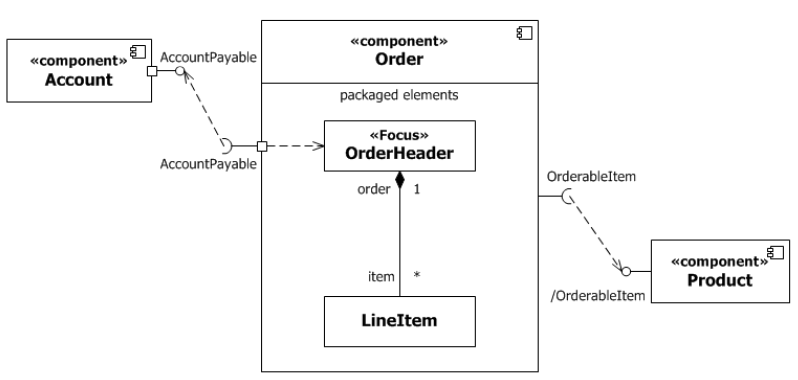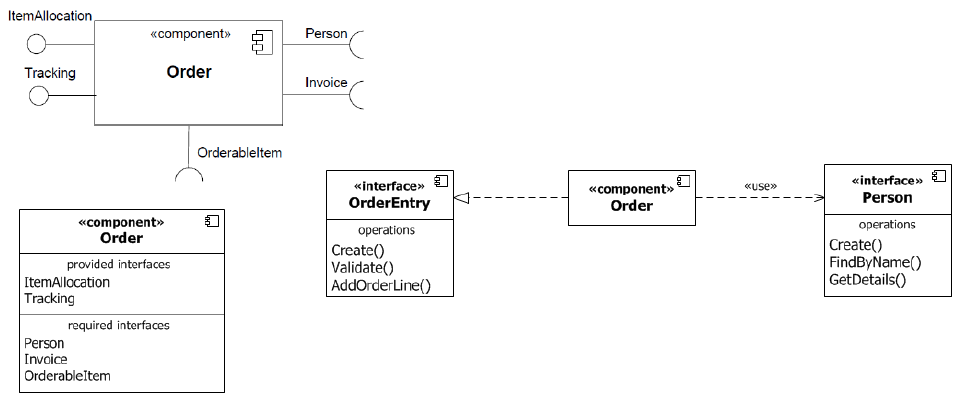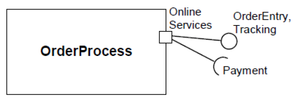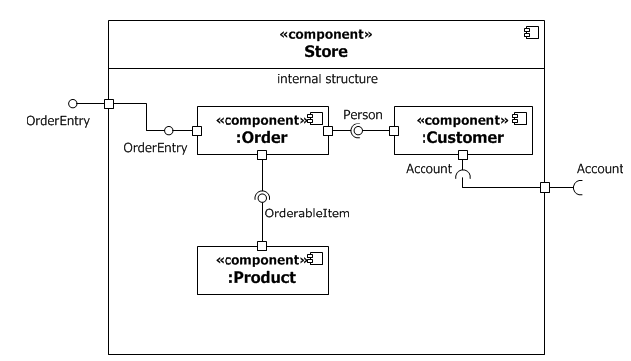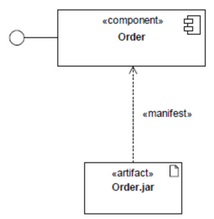UML Component Diagram
Jump to navigation
Jump to search
Component Diagram⌘
- Describes how a software system is split up into components and shows the dependencies among these components.
Component⌘
- A Component represents a modular part of a system that encapsulates its contents.
- A Component is a self-contained unit that encapsulates the state and behavior of a number of Classifiers.
- A Component specifies a formal contract of the services that it provides to its clients and those that it requires from other Components
- A Component is a substitutable unit that can be replaced at design time or run-time by a Component that offers equivalent functionality.
Interfaces⌘
Port⌘
- Ports represent interaction points through which an Classifier communicates with its environment.
- A Port may specify the services an Classifier provides (offers) to its environment as well as the services that an Classifier expects (requires) of its environment.
Connector⌘
- Connector specifies a link that enables communication between two (or more) instances.
- Two types of connectors:
- delegation (connect externally provided interfaces to the parts that realize or require them, represents the forwarding of events)
- assembly (connector between two or more parts that defines that one part provides the services that other part use)
Manifestation⌘
- An Artifact may embody, or manifest, a number of model elements.
- Manifestation represents implementation of one or more model elements by an artifact.
